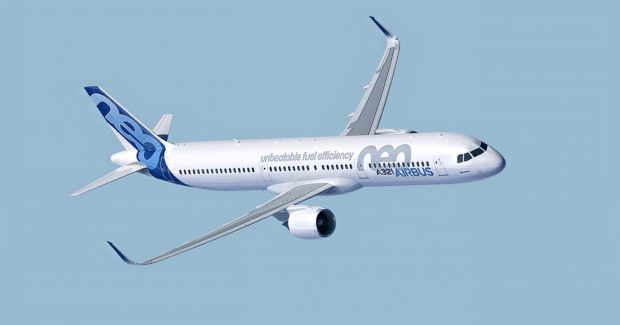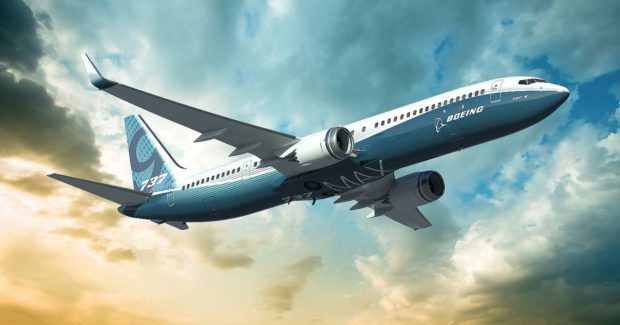Ride Like the Wind
New program launches, significant improvements in production rates, and rapid growth in commercial passenger and freight traffic has been boosting the production rates of commercial jets. Single-aisle jets and private business aircraft are driving jetliner demand as the low-cost carrier business model soars – all of which is good news for aircraft manufacturers and the metal fabricators who supply them with parts, assemblies and other support services.
Posted: May 30, 2018
Business is “wheels up” in the commercial aircraft industry as increased routes for travelers are fueling air traffic growth and large numbers of new program launches. Air traffic has expanded in the past few years in emerging markets like Asia, with countries like India and Japan increasing their business realm. This has broadened demand significantly for the commercial fleets of jet-makers like The Boeing Company (Chicago, IL) and Airbus SE (Toulouse, France) in Asiatic countries.1 Rapid growth in commercial passenger and freight traffic has boosted the production rates of commercial jets, where single-aisle airplanes – compared with their wide-body counterparts – have become the major driver of jetliner demand through the global popularity of the low-cost carrier business model.1 Single-aisle planes are increasing competition on the world’s busiest long-haul routes as growing numbers of smaller jets give travelers more destination options and airlines more flexibility in scheduling.2
In markets with high fares and weak service, smaller jets that can carry around 200 passengers, such as the Boeing 737 Max and the Airbus A321neo, have carved a niche alongside larger twin-aisle jets by markedly expanding the list of cities served and opening up new markets.2, 3 As the backbone of commercial air travel, they are more versatile and can be deployed on other routes or rented out to other airlines during the slower winter season. “You can increase aircraft utilization and use the same flight crews,” said consultant James Halstead of Aviation Strategy Ltd. (London, England).2 Boeing and Airbus are each raising production of their single-aisle planes to satisfy this demand. By mid-2019, Airbus is expected to build 63 narrow-bodies a month and has indicated they could boost output further, while Boeing plans to build their 737s at a rate of 57 a month starting next year.3, 4
References
- “Aerospace & Defense Industry Outlook: March 2018,” Zacks Equity Research, March 22, 2018. Retrieved from https://www.nasdaq.com/article/aerospace-defense-industry-outlook-march-2018-cm938590.
- “Trans-Atlantic Flights Add Smaller Jetliners,” Doug Cameron and Robert Wall, The Wall Street Journal, May 16, 2018. www.wsj.com.
- “Boeing, Airbus Boost Jet Backlogs,” Doug Cameron and Robert Wall, The Wall Street Journal, April 10, 2018. www.wsj.com.
- “Airbus Curbs A330 Production as Airlines Favor Smaller Jets,” Doug Cameron and Robert Wall, The Wall Street Journal, April 27, 2018. www.wsj.com.
- “Outlook 2018: Slow but Steady Growth,” Advanced Manufacturing, November 28, 2017. Retrieved from http://advancedmanufacturing.org/outlook-2018-slow-steady-growth.
The rapid increase in demand for smaller aircraft by budget carriers in hot travel markets has challenged suppliers who are wrestling to deliver complex components, engine assemblies and related services faster than ever.3 For example, Airbus recently built dozens of planes that could not be delivered on time because they lacked engines supplied from Pratt & Whitney (East Hartford, CT) and CFM International (Cincinnati, OH).4 This is one reason why engine component suppliers like GKN Aerospace (Redditch, UK) are quickly transitioning to new metal-spinning technologies to keep pace with business that is moving fast:
Metal-Spinning Out-of-Round Engine Lip Skins for Aircraft Engine Housings
These custom machines were built to spin-form lip skins out-of-round by 8½ in to 9 in for the nacelle on the engines of Boeing 737 Max and 777X aircraft. They hold tight tolerances that are verified by thermo-imaging cameras and fed back by the CNC for accuracy tracking and in-process adjustments of the heating torch.
As more new programs for smaller aircraft take off, things are changing fast. With airlines around the world ordering new aircraft and demanding technological innovation, the aerospace industry is growing – and suppliers must pioneer higher levels of flexibility to keep up with designing and developing more complex parts and systems, with higher technology content and upgraded production capabilities, in shorter lead times and at a competitive cost. Here are some of the latest metal fabrication systems that can help them meet these demands:
Fast, Cost Efficient Production of Near-Net-Shape Metal Aerospace Parts
Modular 3-axis and 5-axis GTarc machines from GEFERTEC use 3DMP additive manufacturing technology to build each part welding layer-by-welding layer for maximum material utilization that leads to substantial cost savings of up to 60 percent on expensive materials like titanium.
Affordable 3D Printing of Aerospace Interior Cabin Parts
The ProX SLS 6100 laser sintering 3D printer from 3D Systems incorporates production-grade materials, 3D Sprint software and 3D Connect capability for cloud-based monitoring services to seamlessly scale from functional prototyping to low volume functional production for aerospace interior cabin parts.
How to Prove-Out Large Aerospace Part Form and Functionality Before Building
Powered by NVBOTS, the SAAM system from Cincinnati Incorporated uses fused filament fabrication technology to 3D print plastic parts directly from a CAD design so that designers can prove-out part form and functionality while saving material and time prior to building out full-scale parts on a BAAM.
Robotic Systems Integration for Aircraft Manufacturing
Large-scale automation from Genesis Systems features KUKA robots and mobility equipment for non-destructive inspection, laser processing, mobile robotic platforms, IIoT connectivity for press tending and cell control, and manipulators used in commercial aerospace and aircraft applications.
Wet Blast System for Aircraft Engine Components
The WBS/Guyson Model 72×36 Dual Operator System is used for cleaning and surface preparation of aircraft engine components up to 55 in long and 24 in diameter.
Vacuum Furnaces for Aerospace Brazing and More
Customized MetalMaster and TITAN vacuum furnaces from Ipsen provide precision gas quenching for aerospace brazing and other high vacuum applications, particularly with thin section parts and lighter pieces.
Laser Cut Highly Reflective Aerospace Metals Up to Four Times Faster
The Titan FX large-format laser cutting system from Fonon uses an advanced direct drive magnetic motion system, innovative CleanCut laser technology and adaptive thin-to-thick beam shaping technology to automatically balance high acceleration, cut speeds and positioning with maximum accuracy.
Ultrasonic Cleaning of 3D Printed Aerospace Parts
The compact 20 gal plug-and-play Omegasonics 1900BTX ultrasonic cleaning machine from Plural Additive Manufacturing uses a specially formulated blend of aerospace quality polyphenylene sulfide to clean parts 3D printed on fused filament fabrication machines from 3ntr.
Gas Technologies and Powder Storage Advance the Quality of 3D Printed Aerospace Metal Parts
Ideal for powder-bed laser fusion processes, the portable ADDvance O2 precision atmosphere monitoring system and powder cabinet from Linde precisely controls O2, temperature and humidity levels in the powder process chamber and storage atmosphere.
Metric-Sized Metal Shapes and Parts for Aerospace Applications
Metric metals from Parker Steel include 17-PH round bar stainless steel and 360 brass round and hex bars for high strength, superior corrosion resistance and easy machining that is suitable for bushings, circuit board relays, switches, nuts, bolts, pump shafts, fixtures and other parts used on aircraft.
Oscillating Laser Beam Opens Up Applications for Aerospace Parts
The welDYNA scan head from SCANLAB opens up countless new possibilities in aerospace processing where thick metal parts and fiber-reinforced plastics must be cut more quickly and cleanly.
How to Cut Finishing Times of Aircraft Blisks From Several Days to a Few Hours
By mounting single workpieces to the inner dome of the processing bowl, the redesigned CM vibratory system from Walther Trowal allows deburring and general surface improvement of components with diameters up to 980 mm.





